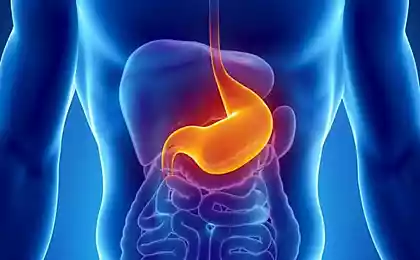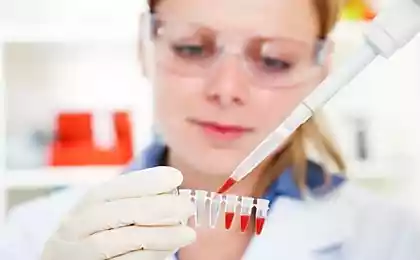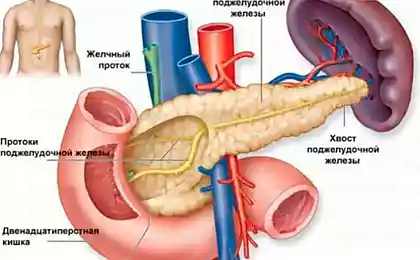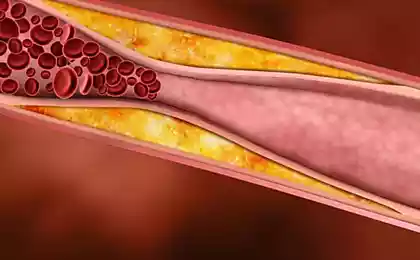517
To read and understand: the Biochemical analysis of blood — Norma and decoding
Biochemical analysis of blood, or simply blood biochemistry, is one of the methods of laboratory diagnosis conducted by the ambulatory and in the hospital. This study shows how to diagnose various diseases and as a preventive measure in order to alert a particular pathology.
For the reliability of the results of all biochemical analyses of blood taken in a hospital from a vein on an empty stomach with the exception of pre-stress, physical activity, fatty food and alcohol.
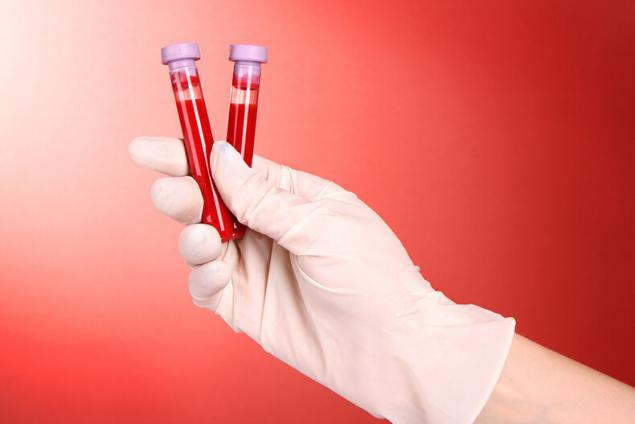
1. Glucose.
The content of glucose in plasma is one of those biochemical parameters that primarily draw the attention of clinicians. It is also called blood sugar or blood glucose. Measured in millimole per liter (mmol/l). Normal blood glucose levels is within the numerical interval from 3.3 to 5, 5. The increase in blood sugar above acceptable levels called hyperglycemia. This condition is noted in diabetes, but not only.
Hyperglycemia occurs in trauma, severe illness, sepsis, stress, hormonal imbalance. Blood sugar increases with adrenal tumors and pituitary gland. Hypoglycemia – reverse as with a decrease in plasma glucose. The most common cause – an overdose of insulin and antidiabetic drugs in diabetics.
In addition, the blood sugar is lowered when the total depletion of the body, including as a result of starvation. Hypoglycemia may occur in adrenal insufficiency, some diseases the pituitary, and pancreatic tumors. Often blood sugar is reduced in individuals who abuse alcohol. It should be noted that hypoglycemia represents a greater threat to life than hyperglycemia.
2. Protein and its fractions.
Proteins or proteins contained in plasma in the amount of 65-85 g/l (grams per liter). In clinical practice, most often a decrease in the protein below an acceptable level – hypoproteinemia. This condition may be due to insufficient intake of protein intake, massive burns, severe infectious diseases, thyroid disease, sepsis, liver and gastrointestinal tract.
The increased protein (hyperproteinemia) is observed less frequently. Most often it is relative and is caused by dehydration and thickening of the blood, when the specific weight dry residue, including protein, increases. But there are reasons and serious – diseases of the blood, cirrhosis of the liver, tumors of the blood.
However, the total protein content not saying much. Most diagnostic significance of the level of protein fractions – albumins and globulins. Albumins have a lower molecular weight and are in greater numbers – approximately 60-65% of the total protein. The globulins, on the contrary, they weigh more, and their level – 30% of all proteins. Although globulins heterogeneous – emit alpha, beta and gamma globulin.
The ratio of albumins and globulins appear in the same ratio, which normally ranges from 1.5 to 2.5. The aforementioned decrease of protein is mainly due to albumin, while the relative content of globulins is increased. Consequently, reduced albumin-globulin ratio. The increase of this coefficient has no practical significance.
3. Bilirubin.
Our red blood cells are not eternal, and after some time (3-4 months). destroyed. Bilirubin is a breakdown product of hemoglobin contained in red blood cells. Normally, the bilirubin contained in the blood in the amount of 8.5 -20,5 µmol/L. (micromol per liter). This is the total bilirubin, which is heterogeneous and is presented in two fractions – direct and indirect bilirubin. Formed immediately after the breakdown of hemoglobin bilirubin has a toxic effect on organs and tissues. It's a free or direct bilirubin, which is always contained in blood plasma, but not more than 17, 1 µmol/L.
Further indirect toxic bilirubin bound in the liver with glucuronic acid to relatively harmless compound – related or direct bilirubin, which is in the composition of bile excreted into the small intestine. The content of the direct fraction is about 25% of the total number of bilirubin – somewhere at the level of 4-5 mmol/L.
In various diseases are increased different fractions of bilirubin. Massive destruction of red blood cells (hemolysis) due to infectious diseases, poisoning, snake bites increased direct bilirubin. This rate is elevated in liver disease, hepatitis. Indirect bilirubin is increased due to the mechanical barriers to the outflow of bile in cholelithiasis, cancer of the gallbladder and pancreas. It is noteworthy that the increased levels of bilirubin can even visually identify the characteristic icteric staining of the skin and sclera.
4. Transaminase.
Transaminases or aminotransferases are enzymes that facilitate the exchange of substances inside the cell. In the course of biochemical studies to determine the level of two transaminases — aspartate aminotransferase (AST, AST) and alanine aminotransferase (ALT, Alat). Since aminotransferases are intracellular enzymes, their content in the blood plasma is small. The AST level is within 0,1 – 0,68 mmol/mlhc (micromole per milliliter per hour), and ALT this indicator is 0.1 to 0.45.
The increase of transaminases is due to the so-called syndrome of cytolysis massive cell death. As a rule, this syndrome due to myocardial infarction, hepatic disease, or severe poisoning, leading to the destruction of a large number of liver cells. And liver pathology is accompanied by a preferential increase in ALT, and in myocardial infarction mostly fixed the rise of AST.
In addition to the above conditions, the increase of transaminases observed in severe trauma, burns, infectious and neoplastic processes, after extensive surgical interventions. Some laboratories can display the content of aminotransferases in other units – units per liter (U/l) or in international units (IU). For women the numeric value of this indicator should not exceed 30, and for men, 40.
5. Urea.
In our organism constantly there are processes of synthesis and breakdown of protein. In addition, a portion of protein coming from food undergoes putrefaction in the intestine. And one of the products of protein breakdown is ammonia. This is a very highly toxic compound, even in small quantities it has a detrimental effect on organs and tissues, primarily the brain.
To avoid this, ammonia with a flow of blood delivered to the liver, where in the course of complex biochemical reactions transformered into harmless non-toxic compound urea. Further, the urea is transported by blood to kidney where excreted in the urine. However, a small amount of this compound in the kidneys absorbed back (reabsorbed).
This number neabsorbirovanna urea due to its content in blood plasma, which averaged a 2.4 – 8.3 mmol/L. However, this value may vary slightly depending on age – in children the content of urea is somewhat lower, and in elderly and old people above. The high content of urea is mainly caused by impaired renal excretory function and renal insufficiency, when the excretion of urea with urine is disrupted. This can also lead heart failure, when reduced blood flow to the kidneys.
Another reason for the high urea – amplified protein breakdown with injuries, burns, severe infections, gastrointestinal bleeding. Sometimes a moderate increase in urea may occur in nome – after physical exercise and consuming excessive amounts of vegetable and animal protein (meat, legumes). In some cases, there is a relatively high urea due to dehydration and thickening of blood. Reduced urea in diseases of the liver and intestines. The former case is its synthesis from ammonia, and the second decreases the absorption of dietary proteins. Low urea may be vegetarians.
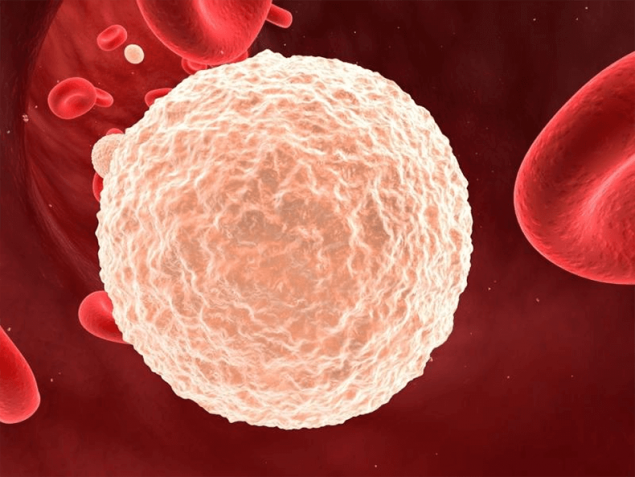
6. Creatinine.
This substance, like urea, is a product of protein metabolism and is also excreted by the kidneys. Creatinine – product of metabolic processes in skeletal muscle and to a lesser extent in the brain. Accordingly, its level will depend on the state of the kidneys and muscles. Normal creatinine levels in men is 57-93 µmol/l in women, and 80-115 µmol/l in men. This difference is due to different degree of muscle development in both sexes.
Elevated creatinine is noted in renal failure, severe injuries with damage to the muscles, increased thyroid function, after applying some anti-inflammatory and antibacterial agents. Moderately high creatinine detect in athletes.
7. Amylase.
This enzyme is produced by the pancreas and to a lesser extent salivary glands. Under the action of amylase splits starch and other macromolecular carbohydrates to low molecular weight sugars. A large part of the amylase is in the glandular tissue of the pancreas and salivary glands, and in plasma it is present in the range of 25 – 100 U/L.
The increase in amylase is a hallmark of acute pancreatitis – inflammation of the pancreas. The level of this enzyme can be high due to blockage of pancreatic duct by stone or tumor. Amylase is increased in mumps in children, which in the vernacular is called pig. With further progression of pancreatitis develops, the insufficiency of pancreatic function, which leads to a decrease of the amylase activity.
Low content of this enzyme is detected during the degradation of the pancreas (pancreatic necrosis) as a result of alcohol abuse.
8. Cholesterol.
Heard almost everything, but few know what it is. Cholesterol is a substance produced in the liver and in the intestine, a product of protein and fat metabolism that are related to the so-called lipoproteins. Part of the cholesterol comes to us with food, mainly of animal origin. Many cholesterol is associated with plaques, clogging blood vessels and causing a heart attack or stroke. But not so simple. Lipoproteins are of high density (HDL), low density (LDL, VLDL). HDL is part of cell membranes, participates in metabolic processes with the formation of many biologically active substances, including hormones. But the connections with low and very low density responsible for the development of atherosclerosis and related disorders.
The content of cholesterol in blood should not exceed 5.17 mmol/l or in other terms, no more than 200 mg/DL (milligrams per deciliter). The proportion of LDL and VLDL should be 100 mg/DL. Increase this figure to 160 mg/l, speaks about the running of the atherosclerotic process.
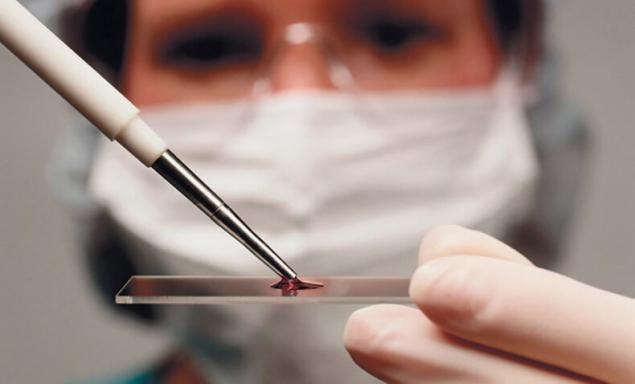
9. Ions.
All trace elements in blood plasma are in the ionized form and are involved in mineral metabolism. The greatest clinical importance among them are: Na (sodium) – 135-145 mmol/l K (potassium) – 3,4-5,3 mmol/l CA (calcium) – 2,23-of 2.57 mmol/l Fe (iron) – 9,0-31,3 mkmol/l Mg (magnesium) – 0,65-1,1 mmol/l cu (copper) – 11,0 – 24.3 mmol/l CL (chloro) — 77 – 87 mmol/l P (phosphorus) – 0,646-1,292 mmol/l
The reasons leading to the change of the content of these trace elements are as numerous as are the trace elements. This may be the increased excretion of urine, copious vomiting and diarrhea, severe infections and lesions of the gastrointestinal tract anything. Any pathological process in the body in varying degrees leads to ion imbalance.
10. Conclusion.
Listed in this article, the values may slightly vary in various sources and reference books. Given only the most clinically significant studies, in General, biochemical blood analysis includes several dozen indicators. But to determine all the quantities in each specific case, technically difficult, and impractical.
Subliminal program: How do people create disease
The hormone oxytocin: the light side of the force
The choice of those or other biochemical parameters for laboratory diagnosis determined by the doctor depending on the disease. Besides relying only on the revealed violations to the correct diagnosis is almost never possible. Biochemical analysis of blood is of value only in combination with other methods of laboratory and instrumental diagnostics.published
Source: www.sethealth.ru/2016/08/31/%D0%B1%D0%B8%D0%BE%D1%85%D0%B8%D0%BC%D0%B8%D1%87%D0%B5%D1%81%D0%BA%D0%B8%D0%B9-%D0%B0%D0%BD%D0%B0%D0%BB%D0%B8%D0%B7-%D0%BA%D1%80%D0%BE%D0%B2%D0%B8-%D0%BD%D0%BE%D1%80%D0%BC%D0%B0-%D0%B8/
For the reliability of the results of all biochemical analyses of blood taken in a hospital from a vein on an empty stomach with the exception of pre-stress, physical activity, fatty food and alcohol.

1. Glucose.
The content of glucose in plasma is one of those biochemical parameters that primarily draw the attention of clinicians. It is also called blood sugar or blood glucose. Measured in millimole per liter (mmol/l). Normal blood glucose levels is within the numerical interval from 3.3 to 5, 5. The increase in blood sugar above acceptable levels called hyperglycemia. This condition is noted in diabetes, but not only.
Hyperglycemia occurs in trauma, severe illness, sepsis, stress, hormonal imbalance. Blood sugar increases with adrenal tumors and pituitary gland. Hypoglycemia – reverse as with a decrease in plasma glucose. The most common cause – an overdose of insulin and antidiabetic drugs in diabetics.
In addition, the blood sugar is lowered when the total depletion of the body, including as a result of starvation. Hypoglycemia may occur in adrenal insufficiency, some diseases the pituitary, and pancreatic tumors. Often blood sugar is reduced in individuals who abuse alcohol. It should be noted that hypoglycemia represents a greater threat to life than hyperglycemia.
2. Protein and its fractions.
Proteins or proteins contained in plasma in the amount of 65-85 g/l (grams per liter). In clinical practice, most often a decrease in the protein below an acceptable level – hypoproteinemia. This condition may be due to insufficient intake of protein intake, massive burns, severe infectious diseases, thyroid disease, sepsis, liver and gastrointestinal tract.
The increased protein (hyperproteinemia) is observed less frequently. Most often it is relative and is caused by dehydration and thickening of the blood, when the specific weight dry residue, including protein, increases. But there are reasons and serious – diseases of the blood, cirrhosis of the liver, tumors of the blood.
However, the total protein content not saying much. Most diagnostic significance of the level of protein fractions – albumins and globulins. Albumins have a lower molecular weight and are in greater numbers – approximately 60-65% of the total protein. The globulins, on the contrary, they weigh more, and their level – 30% of all proteins. Although globulins heterogeneous – emit alpha, beta and gamma globulin.
The ratio of albumins and globulins appear in the same ratio, which normally ranges from 1.5 to 2.5. The aforementioned decrease of protein is mainly due to albumin, while the relative content of globulins is increased. Consequently, reduced albumin-globulin ratio. The increase of this coefficient has no practical significance.
3. Bilirubin.
Our red blood cells are not eternal, and after some time (3-4 months). destroyed. Bilirubin is a breakdown product of hemoglobin contained in red blood cells. Normally, the bilirubin contained in the blood in the amount of 8.5 -20,5 µmol/L. (micromol per liter). This is the total bilirubin, which is heterogeneous and is presented in two fractions – direct and indirect bilirubin. Formed immediately after the breakdown of hemoglobin bilirubin has a toxic effect on organs and tissues. It's a free or direct bilirubin, which is always contained in blood plasma, but not more than 17, 1 µmol/L.
Further indirect toxic bilirubin bound in the liver with glucuronic acid to relatively harmless compound – related or direct bilirubin, which is in the composition of bile excreted into the small intestine. The content of the direct fraction is about 25% of the total number of bilirubin – somewhere at the level of 4-5 mmol/L.
In various diseases are increased different fractions of bilirubin. Massive destruction of red blood cells (hemolysis) due to infectious diseases, poisoning, snake bites increased direct bilirubin. This rate is elevated in liver disease, hepatitis. Indirect bilirubin is increased due to the mechanical barriers to the outflow of bile in cholelithiasis, cancer of the gallbladder and pancreas. It is noteworthy that the increased levels of bilirubin can even visually identify the characteristic icteric staining of the skin and sclera.
4. Transaminase.
Transaminases or aminotransferases are enzymes that facilitate the exchange of substances inside the cell. In the course of biochemical studies to determine the level of two transaminases — aspartate aminotransferase (AST, AST) and alanine aminotransferase (ALT, Alat). Since aminotransferases are intracellular enzymes, their content in the blood plasma is small. The AST level is within 0,1 – 0,68 mmol/mlhc (micromole per milliliter per hour), and ALT this indicator is 0.1 to 0.45.
The increase of transaminases is due to the so-called syndrome of cytolysis massive cell death. As a rule, this syndrome due to myocardial infarction, hepatic disease, or severe poisoning, leading to the destruction of a large number of liver cells. And liver pathology is accompanied by a preferential increase in ALT, and in myocardial infarction mostly fixed the rise of AST.
In addition to the above conditions, the increase of transaminases observed in severe trauma, burns, infectious and neoplastic processes, after extensive surgical interventions. Some laboratories can display the content of aminotransferases in other units – units per liter (U/l) or in international units (IU). For women the numeric value of this indicator should not exceed 30, and for men, 40.
5. Urea.
In our organism constantly there are processes of synthesis and breakdown of protein. In addition, a portion of protein coming from food undergoes putrefaction in the intestine. And one of the products of protein breakdown is ammonia. This is a very highly toxic compound, even in small quantities it has a detrimental effect on organs and tissues, primarily the brain.
To avoid this, ammonia with a flow of blood delivered to the liver, where in the course of complex biochemical reactions transformered into harmless non-toxic compound urea. Further, the urea is transported by blood to kidney where excreted in the urine. However, a small amount of this compound in the kidneys absorbed back (reabsorbed).
This number neabsorbirovanna urea due to its content in blood plasma, which averaged a 2.4 – 8.3 mmol/L. However, this value may vary slightly depending on age – in children the content of urea is somewhat lower, and in elderly and old people above. The high content of urea is mainly caused by impaired renal excretory function and renal insufficiency, when the excretion of urea with urine is disrupted. This can also lead heart failure, when reduced blood flow to the kidneys.
Another reason for the high urea – amplified protein breakdown with injuries, burns, severe infections, gastrointestinal bleeding. Sometimes a moderate increase in urea may occur in nome – after physical exercise and consuming excessive amounts of vegetable and animal protein (meat, legumes). In some cases, there is a relatively high urea due to dehydration and thickening of blood. Reduced urea in diseases of the liver and intestines. The former case is its synthesis from ammonia, and the second decreases the absorption of dietary proteins. Low urea may be vegetarians.

6. Creatinine.
This substance, like urea, is a product of protein metabolism and is also excreted by the kidneys. Creatinine – product of metabolic processes in skeletal muscle and to a lesser extent in the brain. Accordingly, its level will depend on the state of the kidneys and muscles. Normal creatinine levels in men is 57-93 µmol/l in women, and 80-115 µmol/l in men. This difference is due to different degree of muscle development in both sexes.
Elevated creatinine is noted in renal failure, severe injuries with damage to the muscles, increased thyroid function, after applying some anti-inflammatory and antibacterial agents. Moderately high creatinine detect in athletes.
7. Amylase.
This enzyme is produced by the pancreas and to a lesser extent salivary glands. Under the action of amylase splits starch and other macromolecular carbohydrates to low molecular weight sugars. A large part of the amylase is in the glandular tissue of the pancreas and salivary glands, and in plasma it is present in the range of 25 – 100 U/L.
The increase in amylase is a hallmark of acute pancreatitis – inflammation of the pancreas. The level of this enzyme can be high due to blockage of pancreatic duct by stone or tumor. Amylase is increased in mumps in children, which in the vernacular is called pig. With further progression of pancreatitis develops, the insufficiency of pancreatic function, which leads to a decrease of the amylase activity.
Low content of this enzyme is detected during the degradation of the pancreas (pancreatic necrosis) as a result of alcohol abuse.
8. Cholesterol.
Heard almost everything, but few know what it is. Cholesterol is a substance produced in the liver and in the intestine, a product of protein and fat metabolism that are related to the so-called lipoproteins. Part of the cholesterol comes to us with food, mainly of animal origin. Many cholesterol is associated with plaques, clogging blood vessels and causing a heart attack or stroke. But not so simple. Lipoproteins are of high density (HDL), low density (LDL, VLDL). HDL is part of cell membranes, participates in metabolic processes with the formation of many biologically active substances, including hormones. But the connections with low and very low density responsible for the development of atherosclerosis and related disorders.
The content of cholesterol in blood should not exceed 5.17 mmol/l or in other terms, no more than 200 mg/DL (milligrams per deciliter). The proportion of LDL and VLDL should be 100 mg/DL. Increase this figure to 160 mg/l, speaks about the running of the atherosclerotic process.

9. Ions.
All trace elements in blood plasma are in the ionized form and are involved in mineral metabolism. The greatest clinical importance among them are: Na (sodium) – 135-145 mmol/l K (potassium) – 3,4-5,3 mmol/l CA (calcium) – 2,23-of 2.57 mmol/l Fe (iron) – 9,0-31,3 mkmol/l Mg (magnesium) – 0,65-1,1 mmol/l cu (copper) – 11,0 – 24.3 mmol/l CL (chloro) — 77 – 87 mmol/l P (phosphorus) – 0,646-1,292 mmol/l
The reasons leading to the change of the content of these trace elements are as numerous as are the trace elements. This may be the increased excretion of urine, copious vomiting and diarrhea, severe infections and lesions of the gastrointestinal tract anything. Any pathological process in the body in varying degrees leads to ion imbalance.
10. Conclusion.
Listed in this article, the values may slightly vary in various sources and reference books. Given only the most clinically significant studies, in General, biochemical blood analysis includes several dozen indicators. But to determine all the quantities in each specific case, technically difficult, and impractical.
Subliminal program: How do people create disease
The hormone oxytocin: the light side of the force
The choice of those or other biochemical parameters for laboratory diagnosis determined by the doctor depending on the disease. Besides relying only on the revealed violations to the correct diagnosis is almost never possible. Biochemical analysis of blood is of value only in combination with other methods of laboratory and instrumental diagnostics.published
Source: www.sethealth.ru/2016/08/31/%D0%B1%D0%B8%D0%BE%D1%85%D0%B8%D0%BC%D0%B8%D1%87%D0%B5%D1%81%D0%BA%D0%B8%D0%B9-%D0%B0%D0%BD%D0%B0%D0%BB%D0%B8%D0%B7-%D0%BA%D1%80%D0%BE%D0%B2%D0%B8-%D0%BD%D0%BE%D1%80%D0%BC%D0%B0-%D0%B8/







